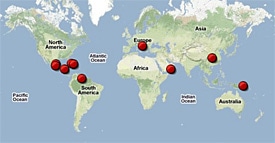Wonder
Crveno Jezero – Red Lake
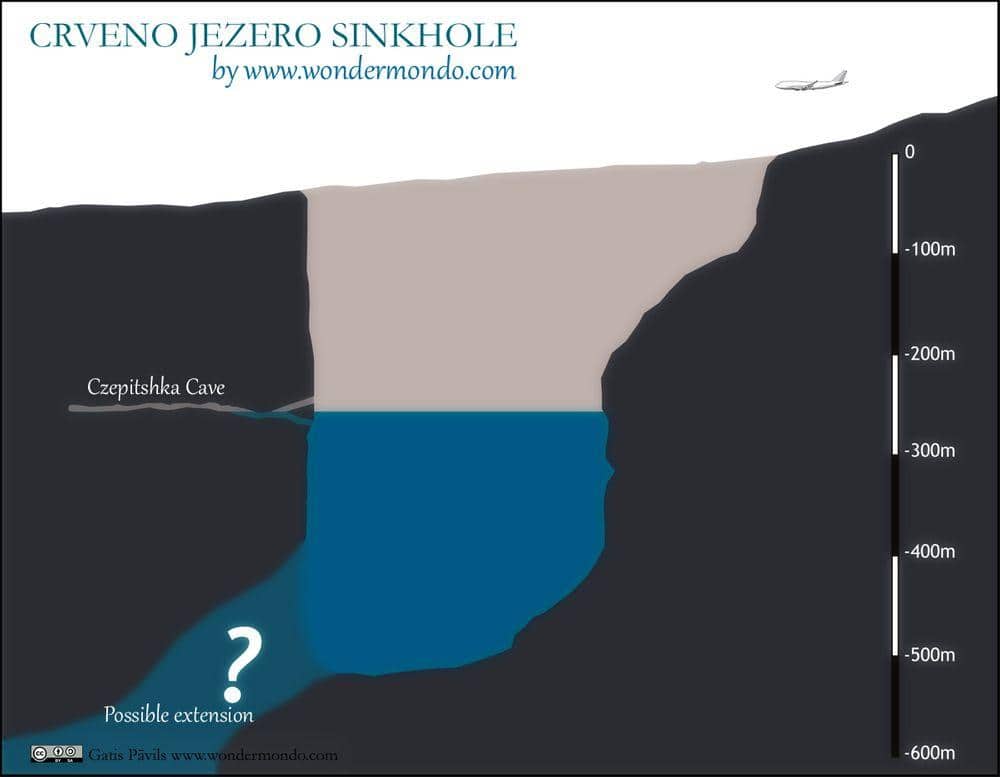
 In short
In short
The largest and, as it seems, the most impressive karst formation in Dinaric Alps is Crveno Jezero – one of the largest sinkholes of the world.
 51.3%
51.3%
GPS coordinates
Location, address
Alternate names
Depth
Map of the site
If you see this after your page is loaded completely, leafletJS files are missing.
 In detail
In detail
Dinaric karst
Dinaric mountains are formed of unusually thick and clean carbonate rock layers – up to 7 km thick. Tectonic processes in Paleocene – Eocene (some 50 million years ago) started to fold these limestone layers into Dinaric Alps which we know today. This process of folding still continues.
During the folding the limestone was broken and in fissures there developed caves and other karst formations.
In total in Dinars are known more than 8,000 landmarks created by karst processes such as caves, sinkholes, powerful springs.
Sinkholes of Imotski
Around the Imotski town near the border with Bosnia-Herzegovina in the upper Cretaceous limestone there have developed unusual, extremely large sinkholes – in total some 20 giant holes, formed by an underground river flowing on the contact of limestone (above) and dolomite (below it). The town itself developed at one of such sinkholes – the 220 – 290 m deep Modro Jezero.
The largest of sinkholes near Imotski is Crveno Jezero – the largest karst landform in the Dinaric mountains and one of the largest sinkholes in the whole world.
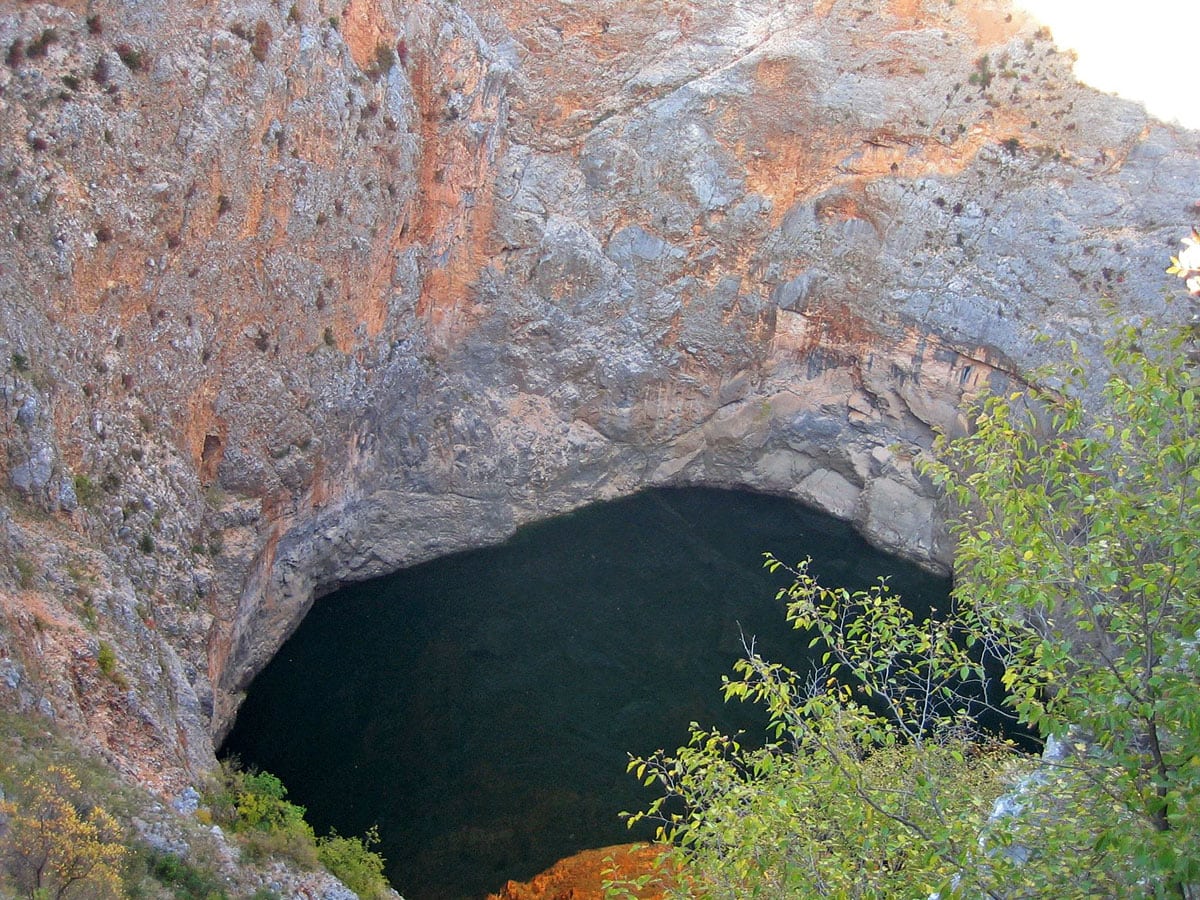
General description
The name of the sinkhole – Red Lake – stems from the color of surrounding cliffs, which contrast with the bright blue color of the lake. These walls are reddish-brown, colored by iron oxides of Mediterranean soil Terra Rossa.
Sinkhole is roughly circular, with nearly vertical, extremely tall walls and the deep blue lake far below. Walls are nearly vertical from three sides and slanted from the fourth. This fourth side collapsed during the earthquake in 1942.
Color of the lake changes from green to dark blue, depending on the sky above it.
Limestone walls rise over the average level of this lake 240 – 260 m tall, dwarfing the forest which grows around it.
Total known depth of the sinkhole is approximately 530 m. Width of sinkhole – 450 – 500 m.
Volume of this sinkhole (not a lake but a whole sinkhole) is estimated to be 25 – 30 million m³, the volume of the lake is at least 7 million m³.
Diameter of the lake is some 200 m. The known depth of the lake is 280 – 290 m. Data about the depth of the lake are somewhat controversial. This can be easily explained – the level of the lake may change per 30 – 50 m.
Level of the lake can change even for 1 m in a day – that requires a flow of hundreds of millions of liters per day.
The bottom of this lake is located at least 5 meters below the level of the sea. Thus the original cave, which formed this sinkhole, formed during the ice ages, when the sea level was lower.
When the level of the lake is lower, it is not available – cliffs over the last 30 m are overhanging all around the lake. Though – if the level of the lake rises, it becomes available – but also after a hard and risky climb.
Bathing in the lake water, for the most part, is really chilly – above it may warm up – but not too much as the Sun reaches it for a too-short time. Deeper the temperature of water decreases to 7 – 8 °C, water is very very clean and lucid.
Crveno Jezero most likely has been formed by the collapse of an enormous cave hall. It seems to be the youngest of Imotski sinkholes – due to its vertical walls. But maybe it simply has a more active underground river which does not let to accumulate sediments.
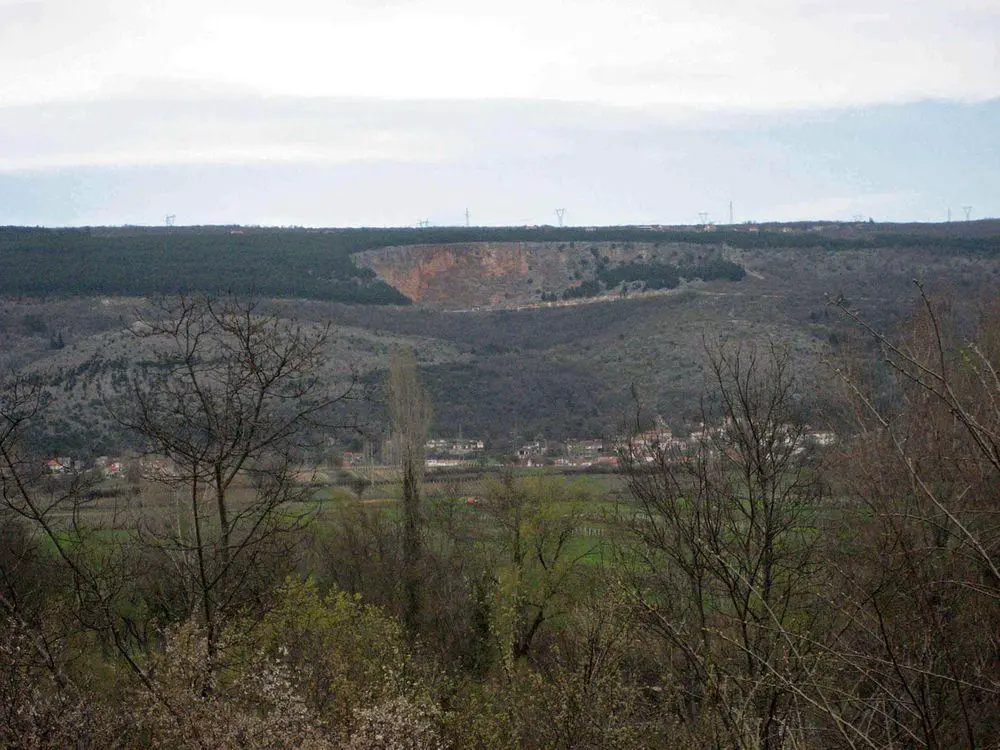
Smaller caves
Near the water level of the lake there have formed smaller caves. One of such caves – Czepitschka Cave – has been explored in 1998. It has one entrance above the water level and another – below it. The total length of this cave is 670 m.
Some other caves are Kik-kak (some 15 m long), Balkon Prijatelstva. These caves have formed by the intermittent level of water in the lake.
Exploration
Crveno Jezero, of course, is known since ancient times. But Wondermondo knows about just one serious exploration expedition to this sinkhole (maybe there have been more). This expedition was organized in 1998 by German, Austrian and Croatian speleologists and scientists, led by Aspacher, Behrend, Haslinger, Hilbert. This was a complex expedition, requiring very high expertise and experience in climbing and deep diving.
In hard work there was obtained valuable information. For example, explorers met a powerful underwater stream at 170 m depth. Thus most likely this sinkhole is crossed by a powerful underground stream. This explains also why there was not noticed a layer of debris on the floor of the lake.
In fact, one of the highest dangers for any explorer here is posed by the falling cliffs. On their way back to the surface explorers learned how dangerous it may become: during the thunderstorm collapsed enormous cliffs and after several hundred meters high free-fall splashed in the lake. Even in calm weather, occasional stones fall in the lake.
Mysterious fish
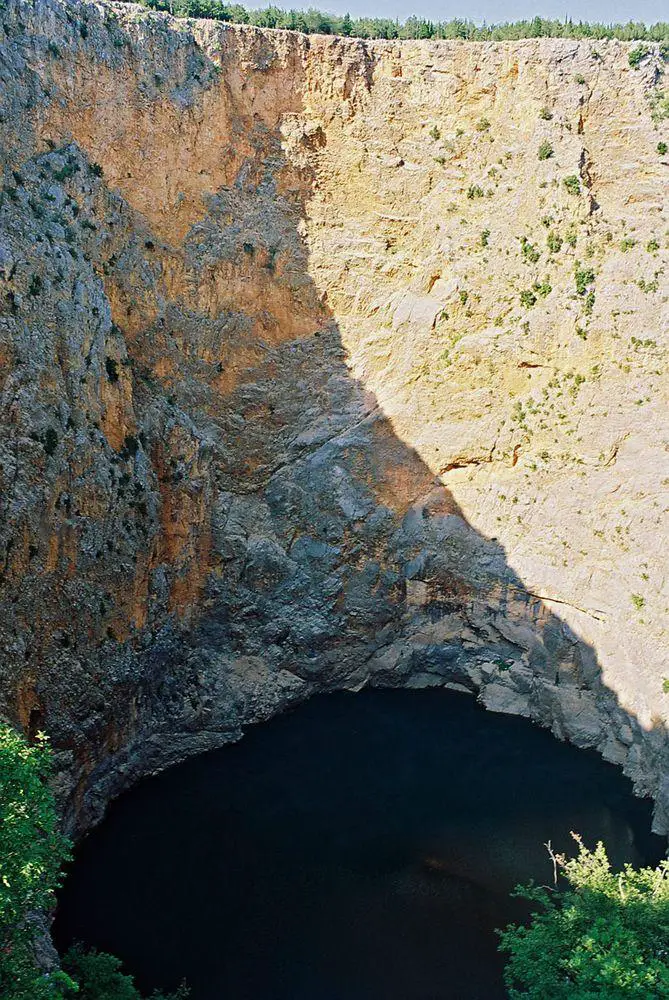
Crveno Jezero contains several organisms who live only here and nowhere else in the world.
One of them is small, up to 12 cm long fish – Delminichthys adspersus (Heckel, 1843) (earlier Latin names of this fish are Leucos adspersus, Paraphoxinus adspersus).
In fact, this fish occasionally, during dry winters and springs, can be seen in springs in the region around the sinkhole – it then spreads even in the surrounding rivers and lakes. This means that Crveno Jezero has underground connections to these springs.
This fish is known to science since 1840 – but only in 1998 did explorers to see it in its natural environment.
The lake contains lots of this fish. Even at 70 m depth there have been observed large swarms of Delminichthys adspersus – with up to 200 fishes in such groups. In the evening they rise up to the surface of the water and are seen from above as "mysterious" black spots.
In Dinaric Alps there are found several more related species of Delminichthys genera – but none outside Dinaric Alps. These fishes require extremely clean water from Dinaric karst and are highly endangered.
References
- PATD: Bernd Aspacher, Ralf Haslinger, Heinz Knauseder, Ralph Wilhelm, Beyond the Blue. Ein Vorstoß in unbekannte Tiefen. Accessed on August 13, 2010
Crveno Jezero is included in the following list:
 Linked articles
Linked articles
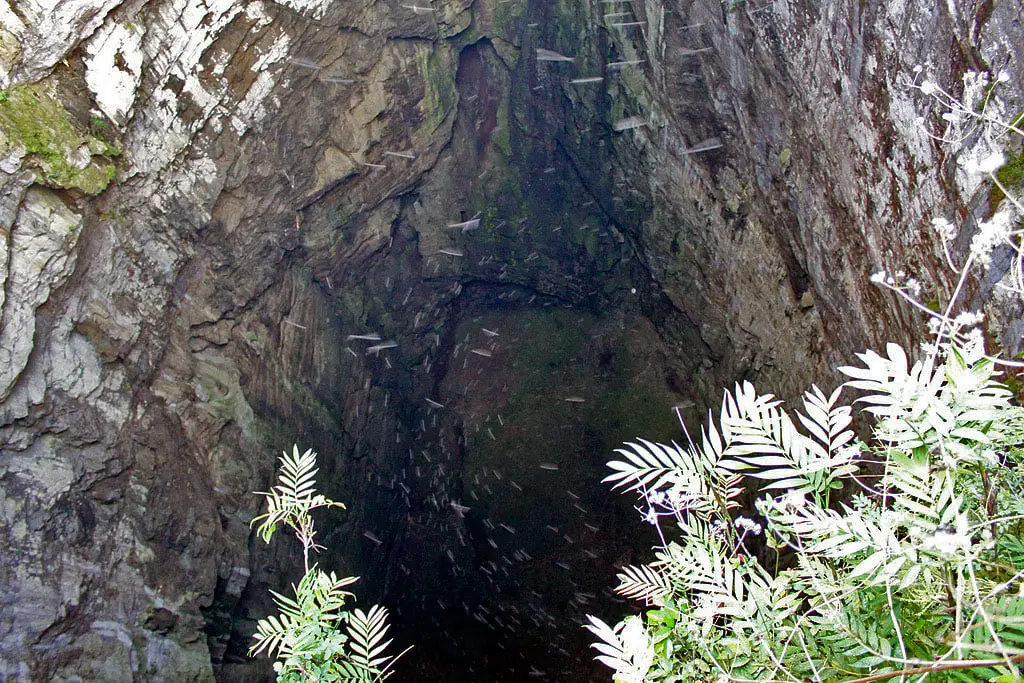
Largest and most impressive sinkholes of the world
A unique list of some of the world’s most impressive natural landmarks – giant sinkholes.
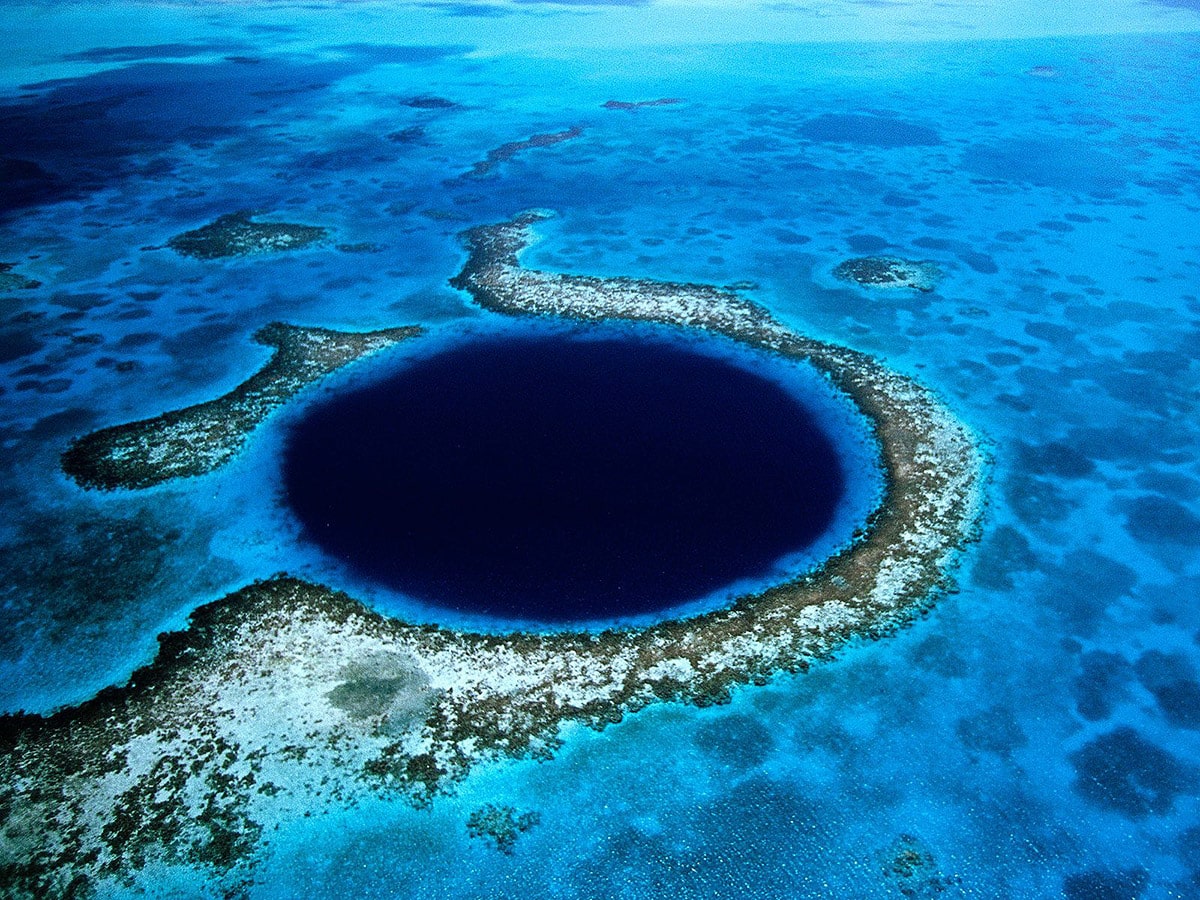
Sinkholes
This category includes outstanding sinkholes – large natural depressions or holes, which for most the part represent collapsed caves.
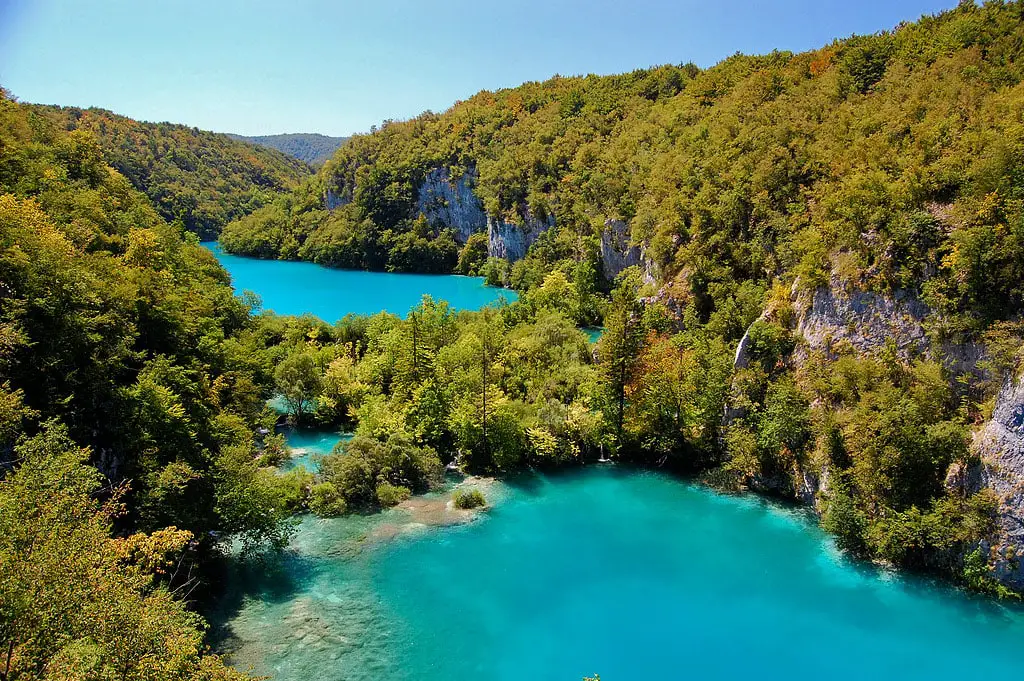
Wonders of Croatia
The natural and cultural heritage of Croatia is diverse and very charming. Highlights of Croatia are the ancient, beautiful Dalmatian seaside cities and towns and the diverse karst formations – such as waterfalls with tuff formations, sinkholes, caves, and others.
 Recommended books
Recommended books
Rock Formations and Unusual Geologic Structures
Looks at the earth’s crust, sedimentary strata, erosion, geologic mapping, fossil beds, folds and faults, volcanoes, and glaciers.
Rick Steves Croatia & Slovenia
Stroll Dubrovnik’s ancient walls, drive through the idyllic Julian Alps, and set sail on the glimmering Adriatic: with Rick Steves on your side, Croatia and Slovenia can be yours!

